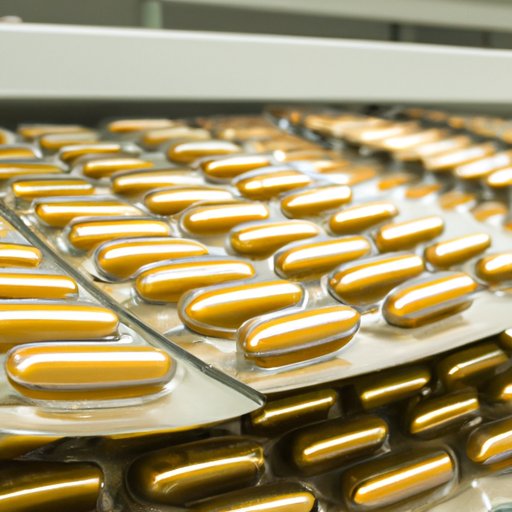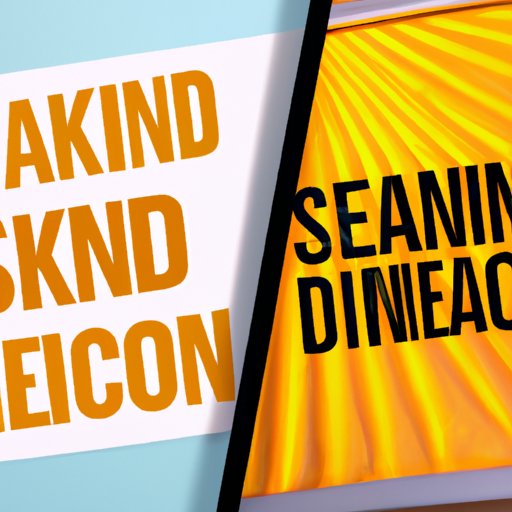
Introduction
There is no denying the importance of vitamin D for our overall health and wellbeing. Vitamin D is essential for strong bones, a healthy immune system, and many other crucial bodily functions. While natural sources of vitamin D include sun exposure and certain foods, the use of tanning beds has been promoted as a way to boost vitamin D levels. However, the safety and effectiveness of this method remain a topic of debate.
The Truth About Tanning Beds and Vitamin D: Separating Fact from Fiction
The role of vitamin D in the body
Vitamin D is produced in the body when the skin is exposed to ultraviolet (UV) radiation from the sun or other sources. This vitamin is necessary for the absorption of calcium and phosphorus, which are crucial for bone health. Vitamin D also plays a role in immune function, muscle function, and inflammation regulation.
How tanning beds provide vitamin D
Tanning beds emit UV radiation, which can stimulate the production of vitamin D in the body. However, the amount of UV radiation required to produce vitamin D is also the same amount that can damage the skin and lead to skin cancer.
Examining the claim that tanning beds are a safe way to get vitamin D
While some argue that tanning beds can be a safe way to get vitamin D, many health organizations disagree. The American Academy of Dermatology, for example, states that the risks associated with tanning bed use far outweigh any potential benefits.
Discussion of conflicting studies and viewpoints
There have been conflicting studies and viewpoints regarding the safety and effectiveness of tanning beds for vitamin D production. Some studies suggest that tanning bed use may help increase vitamin D levels in individuals with vitamin D deficiency, while others argue that the risks of skin cancer and other health issues outweigh any potential benefits.
Sunless Options for Obtaining Vitamin D Without the Use of Tanning Beds
Natural sources of vitamin D
There are natural sources of vitamin D that do not carry the risks associated with tanning bed use. These include foods such as fatty fish, fortified dairy products, and fortified cereals. In addition, moderate sun exposure can also be a source of vitamin D, but it is important to practice safe sun habits to reduce the risk of skin damage and skin cancer.
Vitamin D supplements
Vitamin D supplements are another option for obtaining adequate levels of this essential vitamin. There are two forms of vitamin D supplements: vitamin D2 (ergocalciferol) and vitamin D3 (cholecalciferol). Vitamin D3 is the most effective form for raising vitamin D levels in the body, and it is also found naturally in some animal-based foods such as egg yolks and fatty fish. It is important to consult a healthcare provider before taking vitamin D supplements.
Other alternatives to tanning beds
Other alternatives to tanning beds include self-tanning lotions, sprays, and bronzers. These products provide a tan-like appearance without the risks associated with UV radiation exposure. Some also contain vitamin D supplements that can be absorbed through the skin.
The Risks Outweigh the Benefits: A Comprehensive Look at Tanning Beds and Vitamin D
Overview of the risks associated with tanning beds
Tanning beds carry many risks, including an increased risk of skin cancer, premature aging, and damage to the eyes. The intensity of UV radiation emitted by these beds can be up to three times stronger than the sun, increasing the risk of skin damage and cancer.
Discussion of the negative effects of excess sun exposure
While sun exposure is necessary for vitamin D production, too much can be harmful. Sunburns, premature aging, and skin cancer are all potential risks associated with excessive sun exposure. It is important to practice safe sun habits, such as wearing protective clothing and using sunscreen to reduce the risk of these negative effects.
Explanation of how tanning beds can contribute to skin damage and skin cancer
Exposure to UV radiation damages the DNA in skin cells, which can lead to mutations that can cause skin cancer. Tanning bed use has been linked to an increased risk of melanoma, the deadliest form of skin cancer. In addition, tanning bed use can also contribute to other forms of skin damage, such as premature aging and wrinkling.

Tanning Beds and Skin Cancer: The Dark Side of Chasing Vitamin D
Overview of skin cancer
Skin cancer is the most common type of cancer in the United States. There are three main types of skin cancer: basal cell carcinoma, squamous cell carcinoma, and melanoma. Detection and treatment of skin cancer is crucial, as it can spread to other parts of the body if left untreated.
Discussion of the link between tanning beds and skin cancer
The use of tanning beds has been linked to an increased risk of skin cancer, including melanoma. In fact, the World Health Organization has classified tanning beds as a Class I carcinogen, which means that there is sufficient evidence to suggest that they cause cancer in humans.
Explanation of the risk factors associated with tanning bed use
The risk of developing skin cancer from tanning bed use is higher for individuals who have a family history of skin cancer, have fair skin, or have a history of sunburns or excessive sun exposure. In addition, the younger a person is when they begin using tanning beds, the higher their risk of developing skin cancer later in life.
The Science Behind Tanning Beds and Vitamin D: A Closer Look
Explanation of how tanning beds work
Tanning beds work by emitting UV radiation that penetrates the skin and stimulates the production of melanin, which gives the skin its color. The intensity of the UV radiation emitted by tanning beds can be stronger than the sun, which is why tanning beds carry a higher risk of skin damage and cancer.
Discussion of the wavelength of UV radiation emitted by tanning beds
Tanning beds emit UVA and UVB radiation. UVA radiation is associated with premature aging and wrinkling, while UVB radiation is known to cause sunburns and skin cancer. While some argue that UVB radiation is necessary for vitamin D production, the risks associated with its use far outweigh any potential benefits.
Explanation of the role of vitamin D in the body and how it is produced
Vitamin D is produced in the body when the skin is exposed to UV radiation from the sun or other sources. However, the same UV radiation that is required for vitamin D production can also damage the skin and increase the risk of skin cancer. It is important to practice safe sun habits and consider alternative methods of obtaining vitamin D.
Vitamin D Supplements vs. Tanning Beds: What You Need to Know
Overview of different types of vitamin D supplements
There are two main types of vitamin D supplements: vitamin D2 (ergocalciferol) and vitamin D3 (cholecalciferol). Vitamin D3 is the most effective form for raising vitamin D levels in the body, and it is also found naturally in some animal-based foods such as egg yolks and fatty fish.
Explanation of how vitamin D supplements compare to tanning beds
Vitamin D supplements offer a safe and effective way to increase vitamin D levels in the body without the risks associated with tanning bed use. While some argue that tanning beds may be a more natural way to obtain vitamin D, the risks associated with UV radiation exposure far outweigh any potential benefits.
Discussion of the safety and effectiveness of vitamin D supplements
When taken as directed, vitamin D supplements are generally safe and effective for increasing vitamin D levels in the body. However, it is important to consult a healthcare provider before taking any supplement to ensure that it is safe for you and to determine the appropriate dosage.
Conclusion
Summary of key points
While vitamin D is important for overall health, the use of tanning beds to obtain it is not recommended due to the risks associated with UV radiation exposure. Natural sources of vitamin D, such as food and moderate sun exposure, as well as vitamin D supplements, offer safer alternatives.
Encouragement to make informed decisions about sun exposure and vitamin D intake
It is important to be mindful of sun exposure and to practice safe sun habits to reduce the risk of skin damage and skin cancer. In addition, those who are concerned about their vitamin D levels should consult a healthcare provider to determine the best method of obtaining it.
Final thoughts and suggestions
While the desire for a healthy-looking tan is understandable, it is important to consider the potential risks and to make informed decisions about tanning bed use. By taking steps to protect the skin and by considering alternative methods of obtaining vitamin D, individuals can prioritize their overall health and wellbeing.





